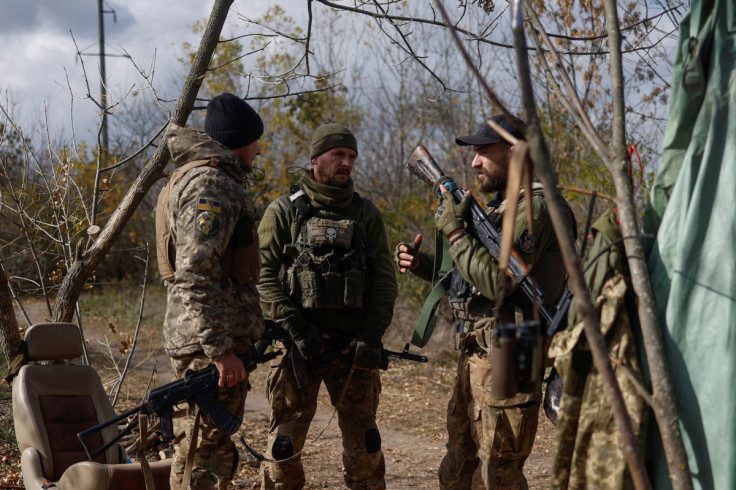Ukraine Troops Say Russian Woes Could Preface Pullback In South

To the Ukrainian soldiers entrenched north of the Russian-held city of Kherson, a recent drop-off in Russian shellfire and armour movements signals that their foes dug into a nearby tree line are suffering serious manpower, supply and hardware woes.
That may mean the Russians are preparing to abandon their defence of the provincial capital and retreat across the Dnipro River, the soldiers said when Reuters visited their positions on Friday.
"We understand that they are low on ammunition. We understand they are short of cannon fodder, and we understand their equipment is defective," said Fugas, 38, the nom de guerre of the commander of the 600-man unit deployed in the southern province of Mykolaiv, bordering Kherson.
The Russians "are constantly suffering losses in this sector, and we're trying to do everything we can so they leave this place as fast as possible," continued Fugas, a stocky man who in civilian life co-owned an agricultural business in the western Lviv region.
Ukrainian forces began moving in August to reclaim Kherson, a strategically important ship-building centre on the sprawling Dnipro River. In recent weeks, they have driven the Russians back 20-30 kms (13-20 miles) on parts of the battlefront.
Kherson province is one of four partially occupied regions that Russian President Vladimir Putin on Sept. 30 proclaimed part of Russia, the largest annexation of territory in Europe since World War Two.
Three weeks later, there are signs that the Ukrainian drive may be forcing Putin to concede ground in Kherson and pull his forces back to the Dnipro's southern bank.
Russian-appointed occupation authorities this week began evacuating thousands of civilians from Kherson to the southern bank, denounced by Kyiv as forced deportations.
Sergei Surovikin, an air force general tapped this month to command Russia's invasion forces, conceded this week that the Kherson situation was "very difficult" and Moscow was "not ruling out difficult decisions."
The sector of the front visited by Reuters on Friday was largely quiet.
The occasional crump of an exploding artillery shell sounded across flat fields. Flocks of partridges shot from bushes and long-legged herons stood in ponds near tiny villages that have been devastated by shellfire.
The Ukrainian unit was deployed in trenches dug into one of the countless tree lines that divide the fields, difficult terrain for the Russians to defend against well-armed determined troops backed by long-range artillery and heavy armour.
The Russians "have been shooting less since about three weeks ago," said Myhailo, 42, who like the other soldiers withheld his last name. "And their drones are less active."
"It's probably been about a month that there's been less shelling," agreed Sasha, 19. "This has to finish at some point. Their ammunition can't last forever."
It was unclear how widespread that trend was across the southern front. Ukrainian military rules prohibited the identification of the unit and its location.
The men were relaxed, chatting and smoking as they sat on car seats and tree stumps outside bunkers and dugouts gouged into the hard earth. Their mascot, a German shepherd named Odin, lounged by an assault rifle, yawning deeply.
The troops said that they would not allow the Russians to retreat without a fight.
"We're not going to help them," vowed Myhailo, who worked in civilian life as a welder in the Lviv region, where the unit is based. "Do they think they can just come here and leave? You can't just break into someone's house and go."
© Copyright Thomson Reuters {{Year}}. All rights reserved.





















